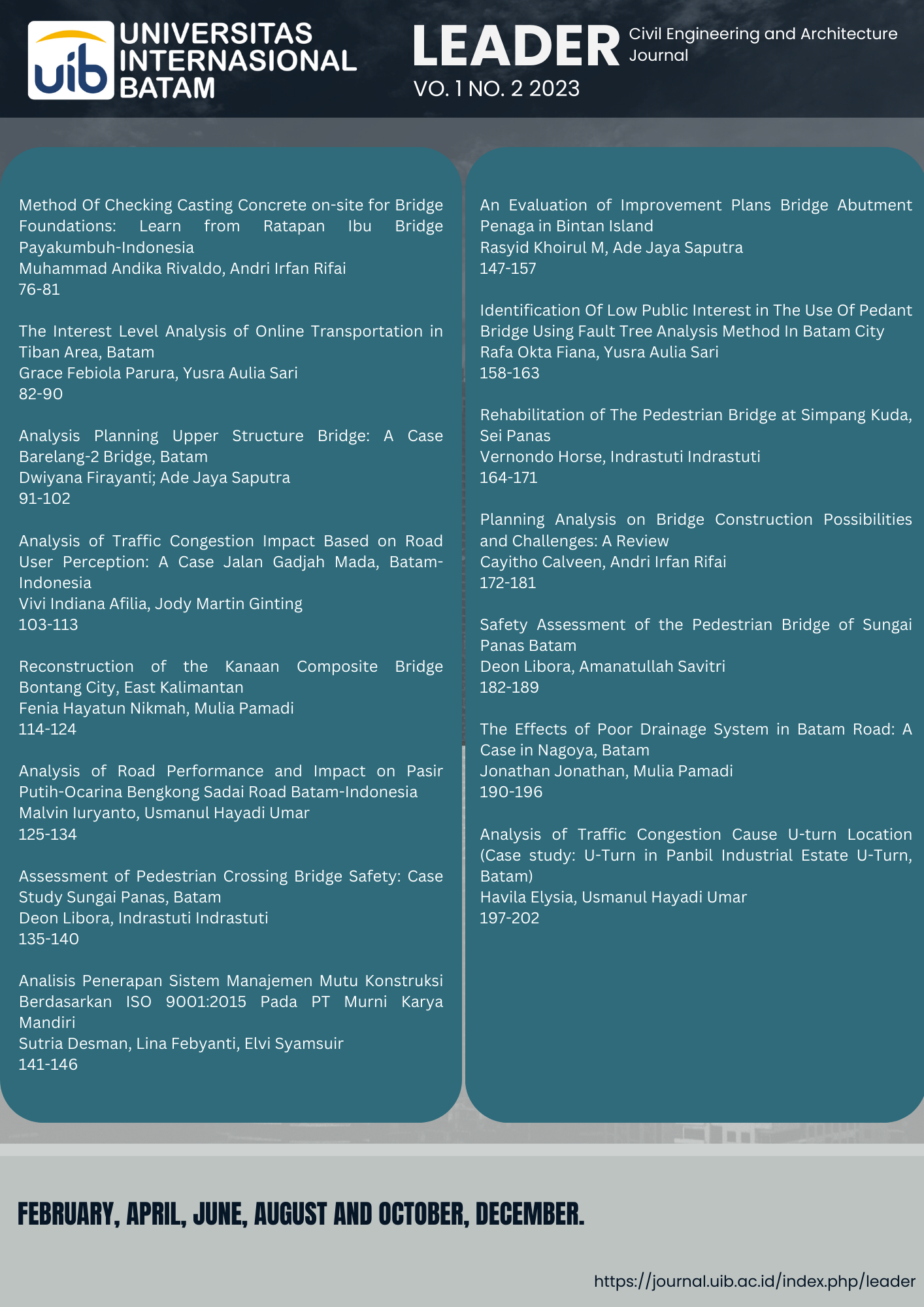Method Of Checking Casting Concrete on-site for Bridge Foundations: Learn from Ratapan Ibu Bridge Payakumbuh-Indonesia
DOI:
https://doi.org/10.37253/leader.v1i2.7887Keywords:
Checking, Concrete, Bridges, FoundationAbstract
Concrete is a composite material made of coarse aggregate, fine aggregate, cement, as well as water, and other additive materials if necessary. Concrete is a widely used construction material in buildings. In most cases, the main structure of a building consists of concrete. According to the Indonesian Concrete Regulation of 1971 (PBI), the quality of concrete is divided into three classes: class one, class two, and class three, depending on the specific requirements of each concrete. The foundation, located at the bottom of a building, plays a vital role in supporting the entire structure's load. It is an essential component of the lower structure and carries the weight of the building above it. There are different types of foundations, such as shallow foundations and pad foundations. A compromised foundation dramatically increases the risk of a bridge collapsing. Besides withstanding vertical forces, the foundation must also endure horizontal loads. Bridges typically rely on a foundation as their primary support structure. Concrete is commonly used for bridge foundations, which can be cast on-site or prefabricated beforehand. However, not all foundations can be prefabricated due to size limitations on the project site. Extra attention is required when casting concrete on-site. The quality of the concrete has a significant impact on the foundation's quality. An inadequate foundation significantly raises the risk of a bridge collapse. When undertaking on-site concrete casting, extra attention is necessary. The quality of the concrete substantially impacts the future foundation's quality. An inadequate foundation significantly raises the chances of a bridge collapse. Therefore, careful inspection is crucial to ensure the concrete's quality and prevent any undesirable situations.







